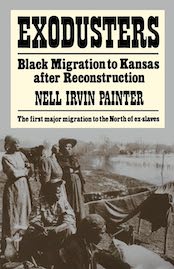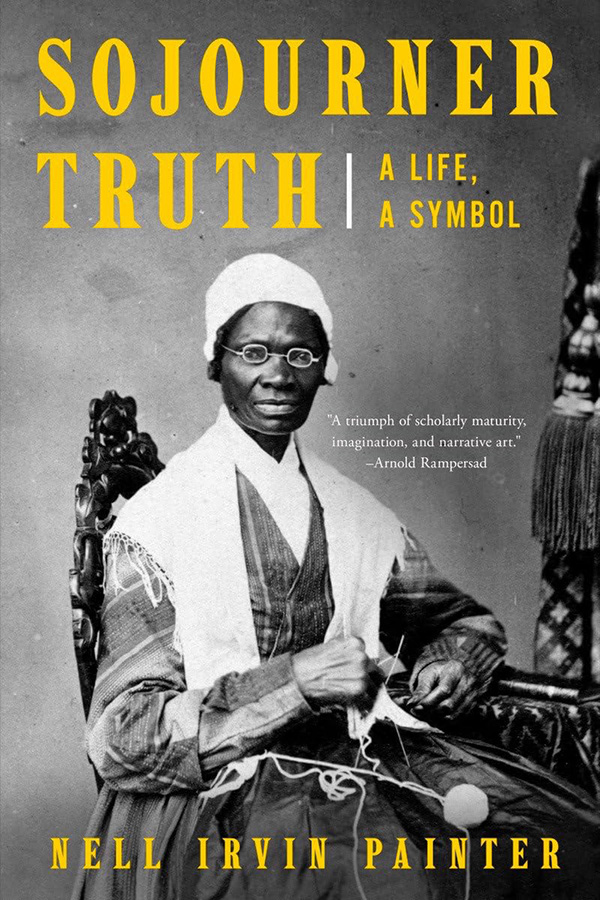Publications Books Authored Books Edited Articles Reviews
Nell Painter has written the following books:
I Just Keep Talking—A Life in Essays
Doubleday, April 2024.

Click here for more information, including reviews and praise.
From the New York Times bestselling author of The History of White People and Old in Art School, a finalist for the National Book Critics Circle Award, comes a comprehensive new collection of essays spanning art, politics, and the legacy of racism that shapes American history as we know it.
Throughout her prolific writing career, Nell Irvin Painter has published works on such luminaries as Sojourner Truth, Ralph Waldo Emerson, and Malcolm X. Her unique vantage on American history pushes the boundaries of personal narrative and academic authorship. Led by an unbridled curiosity for her subjects, Painter asks readers to reconsider ideas of race, politics, and identity. I Just Keep Talking assembles her writing for the first time into a single volume, displaying the breadth and depth of Painter’s decades-long historical inquiry and the evolution of Black political thought—and includes a dazzling new introduction and coda. From her mining of figures like Carrie Buck and Martin Delany for their resonance today, to a deep dive into the history of exclusion through the work of Toni Morrison, to a discussion of the American political landscape after the 2016 election, Painter nimbly portrays the trials of a country frequently at war with itself.
Along with Painter’s writing, this collection features her original artwork, threaded throughout the book as counterpoint. Her visual art shows a deft mind that contemplates the tragedy and humor of her subjects; pulling from newspapers, personal records, and original sketches, Painter’s artwork testifies to the dialectic of tremendous change and stasis that continues to shape American history.
These essays resist easy answers in favor of complexity, the inescapable sense of our country’s potential being thwarted by its failures. I Just Keep Talking will surely solidify Painter’s place among the finest critics and writers of the last century.
Click here for more information on I Just Keep Talking, including reviews and praise.
Links for Purchasing I Just Keep Talking
The History of White People
New York: W. W. Norton, 2010. Japanese edition, 2011, French edition, 2019.
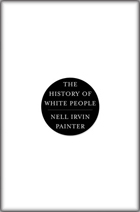
A mind-expanding and myth-destroying exploration of notions of white race—not merely a skin color but also a signal of power, prestige, and beauty to be withheld and granted selectively.
Ever since the Enlightenment, race theory and its inevitable partner, racism, have followed a crooked road, constructed by dominant peoples to justify their domination of others. Filling a huge gap in historical literature that long focused on the non-white, eminent historian Nell Irvin Painter guides us through more than two thousand years of Western civilization, tracing not only the invention of the idea of race but also the frequent worship of “whiteness” for economic, social, scientific, and political ends.
Our story begins in Greek and Roman antiquity, where the concept of race did not exist, only geography and the opportunity to conquer and enslave others. Not until the eighteenth century did an obsession with whiteness flourish, with the German invention of the notion of Caucasian beauty. This theory made northern Europeans into “Saxons,” “Anglo-Saxons,” and “Teutons,” envisioned as uniquely handsome natural rulers.
Here was a worldview congenial to northern Europeans bent on empire. There followed an explosion of theories of race, now focusing on racial temperament as well as skin color. Spread by such intellectuals as Madame de Stael and Thomas Carlyle, white race theory soon reached North America with a vengeance. Its chief spokesman, Ralph Waldo Emerson, did the most to label Anglo-Saxons—icons of beauty and virtue—as the only true Americans. It was an ideal that excluded not only blacks but also all ethnic groups not of Protestant, northern European background. The Irish and Native Americans were out and, later, so were the Chinese, Jews, Italians, Slavs, and Greeks—all deemed racially alien. Did immigrations threaten the very existence of America? Americans were assumed to be white, but who among poor immigrants could become truly American? A tortured and convoluted series of scientific explorations developed—theories intended to keep Anglo-Saxons at the top: the ever-popular measurement of skulls, the powerful eugenics movement, and highly biased intelligence tests—all designed to keep working people out and down.
As Painter reveals, power—supported by economics, science, and politics—continued to drive exclusionary notions of whiteness until, deep into the twentieth century, political realities enlarged the category of truly American.
A story filled with towering historical figures, The History of White People forcefully reminds us that the concept of one white race is a recent invention. The meaning, importance, and realty of this all-too-human thesis of race have buckled under the weight of a long and rich unfolding of events.
Links for Purchasing The History of White People
Nell Painter’s videos discussing her book The History of White People
Information from the publisher W. W. Norton on The History of White People

(click to open)
The French edition of The History of White People — Histoire des Blancs, was released January 31, 2019. Here is more information, including French-language interviews and reviews.
The Japanese edition of The History of White People, released 2011.
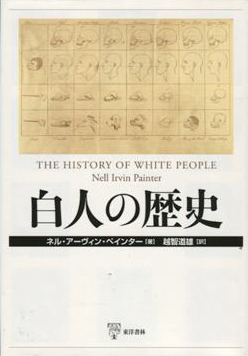
Creating Black Americans: African American History and Its Meanings, 1619 to the Present
Oxford University Press, Fall 2005
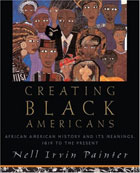
Nell Irvin Painter's book, Creating Black Americans: African American History and Its Meanings, 1619 to the Present was released by Oxford University Press in Fall 2005.
• Purchase from the publisher
• Buy it on amazon.com
Here is a magnificent account of a past rich in beauty and creativity, but also in tragedy and trauma. Eminent historian Nell Irvin Painter blends a vivid narrative based on the latest research with a wonderful array of artwork by African American artists, works which add a new depth to our understanding of black history.
Painter offers a history written for a new generation of African Americans, stretching from life in Africa before slavery to today's hip-hop culture. The book describes the staggering number of Africans—over ten million—forcibly transported to the New World, most doomed to brutal servitude in Brazil and the Caribbean. Painter looks at the free black population, numbering close to half a million by 1860 (compared to almost four million slaves), and provides a gripping account of the horrible conditions of slavery itself. The book examines the Civil War, revealing that it only slowly became a war to end slavery, and shows how Reconstruction, after a promising start, was shut down by terrorism by white supremacists. Painter traces how through the long Jim Crow decades, blacks succeeded against enormous odds, creating schools and businesses and laying the foundations of our popular culture. We read about the glorious outburst of artistic creativity of the Harlem Renaissance, the courageous struggles for Civil Rights in the 1960s, the rise and fall of Black Power, the modern hip-hop movement, and two black Secretaries of State. Painter concludes that African Americans today are wealthier and better educated, but the disadvantaged are as vulnerable as ever.
Painter deeply enriches her narrative with a series of striking works of art—more than 150 in total, most in full color—works that profoundly engage with black history and that add a vital dimension to the story, a new form of witness that testifies to the passion and creativity of the African-American experience.
* Among the dozens of artists featured are Romare Bearden, Elizabeth Catlett, Beauford Delaney, Jacob Lawrence, and Kara Walker
* Filled with sharp portraits of important African Americans, from Olaudah Equiano (one of the first African slaves to leave a record of his captivity) and Toussaint L'Ouverture (who led the Haitian revolution), to Harriet Tubman and Sojourner Truth, to Martin Luther King, Jr. and Malcolm X.
Links for Creating Black Americans
Reviews of Creating Black Americans
Reviews of Creating Black Americans
Southern History Across the Color Line
Chapel Hill: University of North Carolina Press, April 2002. 2nd ed. April 2021.
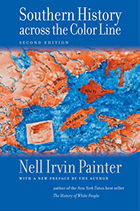
The color line, once all too solid in southern public life, still exists in the study of southern history. As distinguished historian Nell Irvin Painter notes, we often still write about the South as though people of different races occupied entirely different spheres. In truth, although blacks and whites were expected to remain in their assigned places in the southern social hierarchy throughout the nineteenth century and much of the twentieth century, their lives were thoroughly entangled.
In this powerful collection of pathbreaking essays, Painter reaches across the color line to examine how race, gender, class, and individual subjectivity shaped the lives of black and white women and men in the nineteenth- and twentieth-century South. She explores such themes as interracial sex, white supremacy, and the physical and psychological violence of slavery, using insights gleaned from psychology and feminist social science as well as social, cultural, and intellectual history. The book illustrates both the breadth of Painter’s interests and the originality of her intellectual contributions. The second edition features refreshed essays and a new preface that sheds light on the development of Painter’s thought and our continued struggles with racism in the twenty-first century.
Links for Southern History Across the Color Line, Second Edition
Reviews of Southern History Across the Color Line
Southern History Across the Color Line, First Edition
Chapel Hill: University of North Carolina Press, April 2002.

Exodusters: Black Migration to Kansas After Reconstruction
New York, Alfred A. Knopf, 1976; Norton paperback, 1979; 2nd ed., University of Kansas Press paperback (with a new introduction by the author), 1986; Norton paperback, 1992.
A Notable Book of the Year of the New York Times Book Review and a choice of the History Book Club.
"In 1879, fourteen years after the Emancipation Proclamation, thousands of blacks fled the South. They were headed for the homesteading lands of Kansas, the 'Garden Spot of the Earth' and the 'quintessential Free State, the land of John Brown'…Painter examines their exodus in fascinating detail. In the process, she offers a compelling portrait of the post-Reconstruction South and the desperate efforts by blacks and whites in that chaotic period to 'solve the race problem' once and for all." — Newsweek
"What makes this book so important is…[that it] is the first full-length scholarly study of this migration and of the forces that produced it…Most previous studies have focused on nationally recognized black leaders; [Painter] calls for attention to the black masses." — David H. Donald, New York Times Book Review
"A genuine folk movement, the Exoduster migration has…been undeservedly ignored. Nell Irvin Painter has produced a book which rescues the Exodusters from obscurity and demonstrates her considerable talents as a researcher and writer." — American Historical Review
Links for Purchasing Exodusters: Black Migration to Kansas After Reconstruction
Reviews of Exodusters: Black Migration to Kansas After Reconstruction
Return to topSojourner Truth, A Life, A Symbol
New York. W. W. Norton, 1996; Norton paperback, 1997. 2nd ed. April 2024.
Nonfiction winner of the Black Caucus of the American Library Association. A choice of the Book of the Month Club and the History Book Club. [Sample pages at amazon.com]
"The vividly imagined and forcefully written portrait of the iconographic Sojourner Truth is one of the finest biographies of recent years. In her dual roles of historian and cultural critic, Nell Painter is brilliant." — Joyce Carol Oates
"Nell Painter makes Sojourner Truth come alive in all her splendor as a woman, a black, a believer, a crusader, an American legend. Painter has written a moving and masterful biography." — Roger Wilkins
SOJOURNER TRUTH: ex-slave and fiery abolitionist, figure of imposing physique, riveting preacher and spellbinding singer who dazzled listeners with her wit and originality. Straight talking and unsentimental. Truth became a national symbol for strong black women—indeed, for all strong women. Like Harriet Tubman and Frederick Douglas, she is regarded as a radical of immense and enduring influence; yet unlike them, what is remembered of her consists more of myth than of historical fact.
Now, in a masterful blend of scholarship and sympathetic understanding, eminent historian Nell Irvin Painter goes beyond the myths, words, and photographs to uncover the life of a complex woman who was born into slavery and died a legend. Inspired by religion, Truth transformed herself from a domestic servant named Isabella into an itinerant Pentecostal preacher; her words of empowerment have inspired black women and poor people the world over to this day. As an abolitionist and feminist, Truth defied the stereotype of "the slave" as male and "the woman" as white—expounding a fact that still bears repeating: among blacks there are women; among women, there are blacks.
No one who heard her speak ever forgot Sojourner Truth, the power and pathos of her voice, and the intelligence of her message. No one who reads Painter's groundbreaking biography will forget this landmark figure and the story of her courageous life.
Links for Purchasing Sojourner Truth, A Life, A Symbol — New! 2nd edition, April 23, 2024
Reviews of Sojourner Truth, A Life, A Symbol
Sojourner Truth, A Life, A Symbol, First Edition
New York. W. W. Norton, 1996; Norton paperback, 1997.
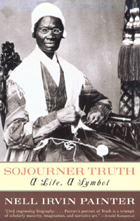
Standing at Armageddon: The United States, 1877-1919
New York, W. W. Norton, 1987; Norton paperback, 1989; 2nd ed. 2008; 3rd ed. 2024.
Winner of the Letitia Brown Book Prize of the Association of Black Women Historians. A Notable Book of the Year of the New York Times Book Review.
"Lucid and compelling....The first general treatment of this era that does full justice to the struggles of working people. It will provide future historians with a good model for how to do narrative synthesis 'from the bottom up.' " — George M. Fredrickson, Stanford University
"A vivid portrayal of people's history with the politics left in. With analytical cohesiveness, intellectual grasp and wit, Painter succeeds not only in integrating issues in Afro-American and women's history with the whole but also in relating the role and presence of the modern state to the trends in ordinary people's lives.... A gripping and forceful narrative." — Nancy F. Cott, Yale University
Short Study Guide. In 1999, Robert F. Zeidel wrote to Nell Irvin Painter asking her for some background that might help high school students in Advanced Placement classes to make better use of Standing at Armageddon: The United States, 1877-1919.
Here is Professor Painter's reply.
Links for Purchasing Standing at Armageddon
Reviews of Standing at Armageddon: The United States, 1877-1919
Standing at Armageddon: The United States, 1877-1919, First Edition
New York. W. W. Norton, 1987; Norton paperback, 1989.
Standing at Armageddon: The United States, 1877-1919, Second Edition
New York. W. W. Norton, 2nd ed. 2008.
The Narrative of Hosea Hudson: His Life as a Negro Communist in the South
Cambridge, Massachusetts, Harvard University Press, 1979. Harvard paperback, 1980; Norton paperback, 1993.
A Notable Book of the Year of the New York Times Book Review.
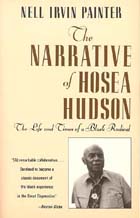
Born into a Georgia sharecropper family in 1898, Hosea Hudson moved to Birmingham, Alabama, to work in the steel mills in the turbulent 1930s and 1940s and became an active member of the Communist Party as well as president of a CIO union local. It was a hard, dangerous life, to be black and communist and pro-union, and Hudson talked about that life to Nell Painter, who brilliantly recreates it in this collaborative oral autobiography.
"Valuable and exuberant…artfully organized and edited…Its strength is Mr. Hudson's remarkable memory, his ability to evoke the drudgery and minutiae that are at the core of any devoted party member's life, black or white, North or South." — Joe Klein, New York Times Book Review
"Among the many exemplary qualities of this narrative is their lack of sentimentality. For Hosea Hudson, there is no romance of American Communism; instead, his relationship with the Communist Party is a model of mutual exploitation…[A] marvelous book. Moving, fearful, and funny, Hudson and Painter's Narrative is valuable an American life as has ever been wrested from anonymity." — Benita Eisler, The Nation
Nell Irvin Painter's introduction to The Narrative of Hosea Hudson has been republished as a chapter in her Southern History Across the Color Line.
Links for Purchasing The Narrative of Hosea Hudson
Reviews of The Narrative of Hosea Hudson: His Life as a Negro Communist in the South

